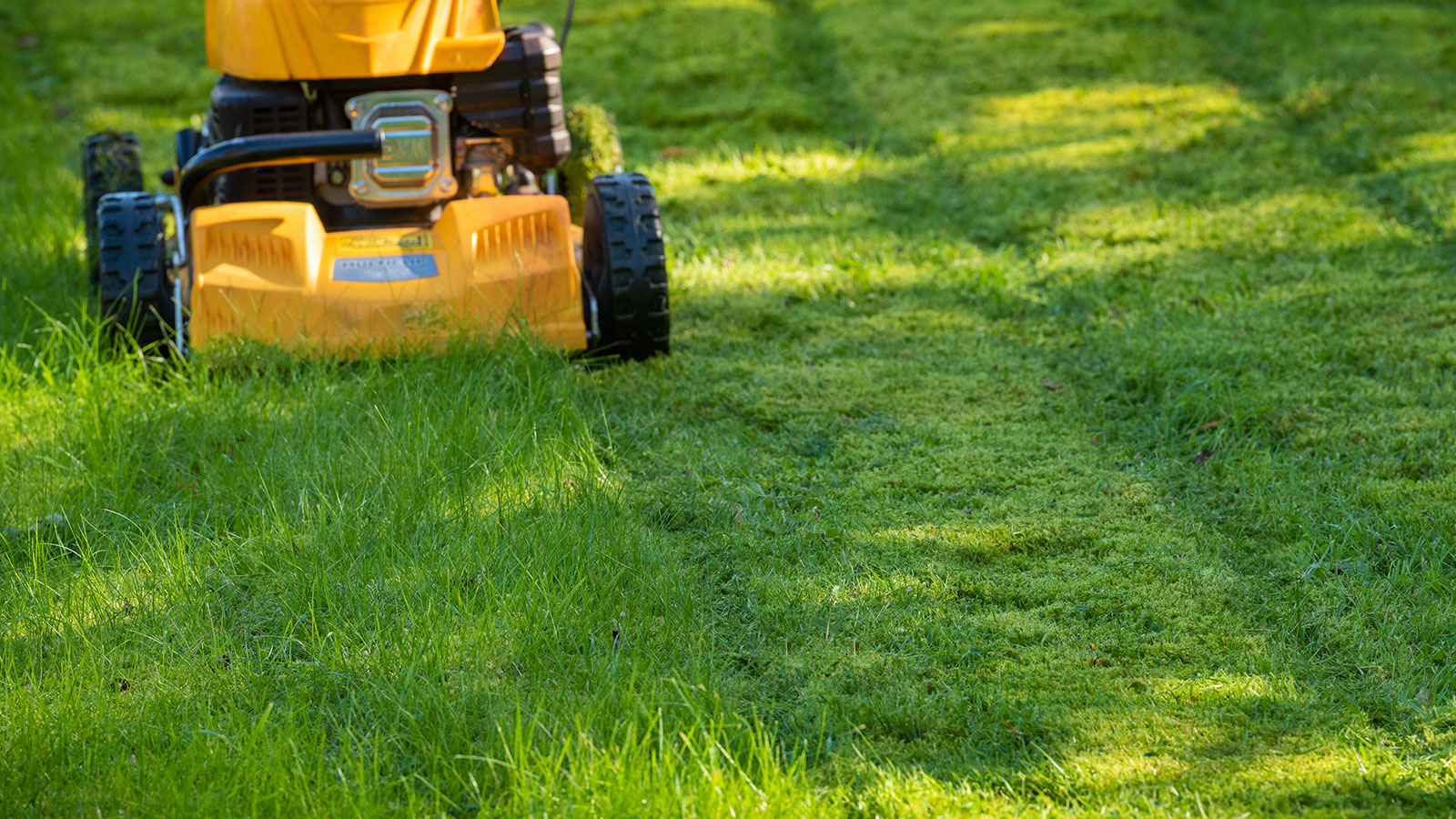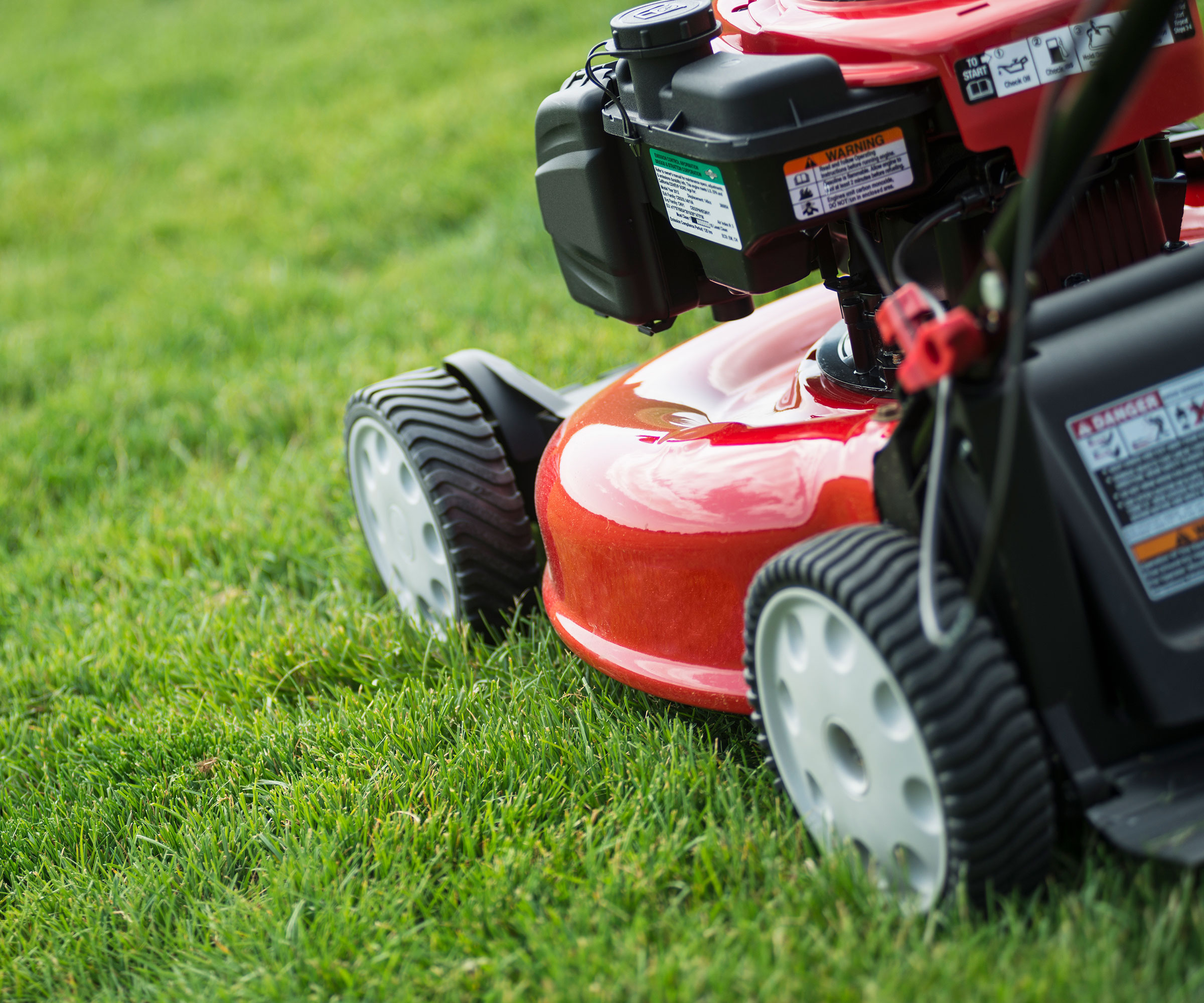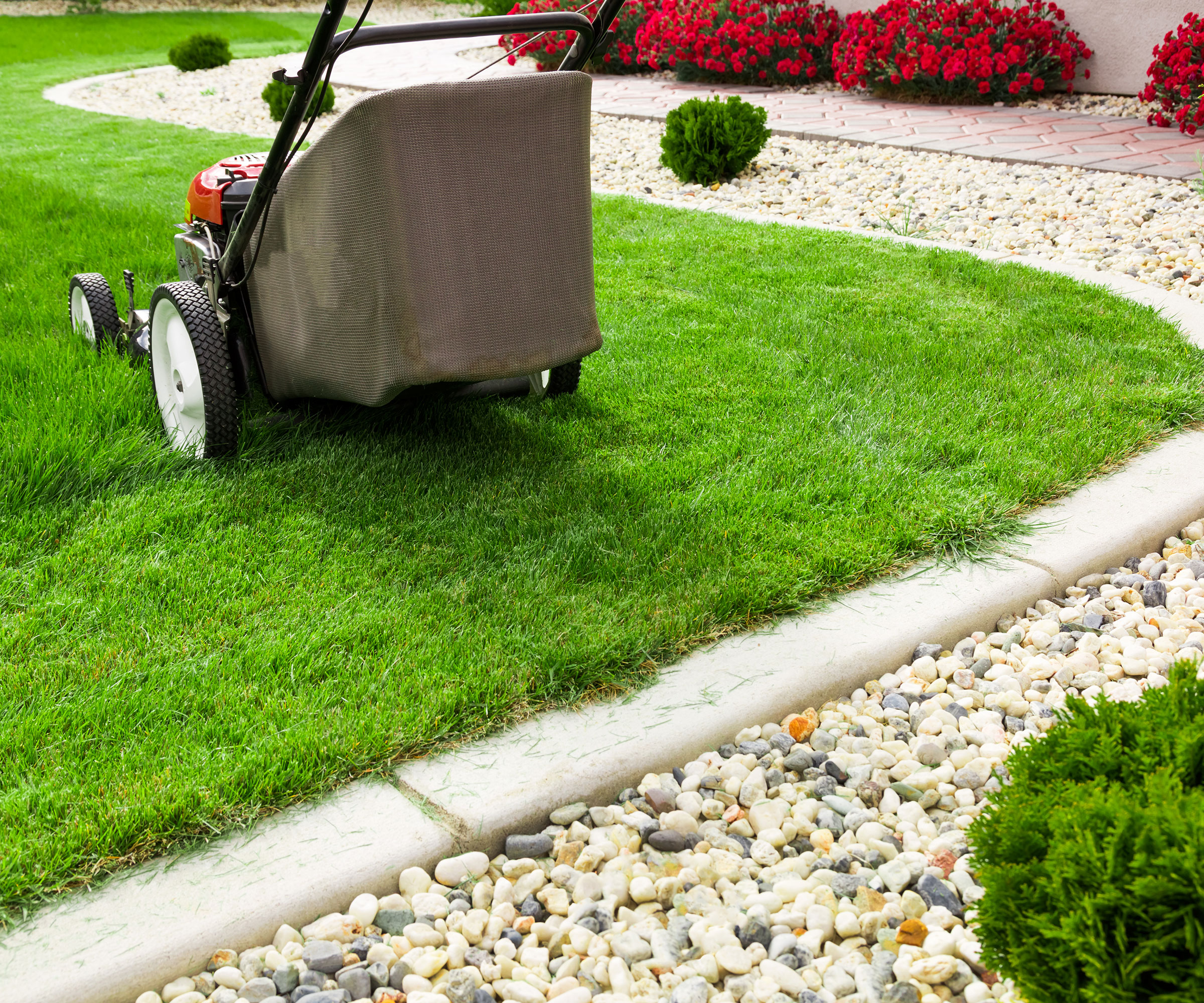'Cutting grass in hot weather can do more damage than good' – expert mowing tips for high temperatures
Learn to recognize when temperatures are too high to mow, so you can safeguard the health of your lawn


Cutting grass in hot weather is a chancy business and runs the risk of causing long term lawn damage.
While it may seem tempting to mow when the weather is dry, experts say it can lead to unsightly brown patches appearing and – even worse – complete die back. Both of which take a great deal of time, money, effort and patience to repair.
If the weather is hot, chances are your lawn is already under stress, no matter how carefully maintained it is, so deciding to reduce its height by a third or even half is not the greatest idea. Knowing more about how grass grows and good general lawn care is key to deciding when to mow for the best results, so we asked lawn care professionals to share their advice.

Mowing in extreme temperatures can cause damage to your lawn
How hot is too hot to mow the lawn?
‘Lawn grass or turf has some basic rules that apply whether it is a cool season or warm season grass,’ says Stacie Smith, owner of landscaping specialists Smithson Exteriors. ‘There isn't an exact temperature limit for cutting grass in hot weather, but when there are sustained temperatures above 90˚F, turf struggles to retain the moisture that it needs, especially when there is a lack of rainfall.’
Some grass varieties suffer more than others, advises Stacie. ‘Cold weather grasses like Kentucky bluegrass, perennial ryegrass, and fescues especially suffer from heat stress when temperatures are high, and rainfall is low. If the temperature is high but there has been sufficient rainfall, it is unlikely any damage will occur when mowing. However, if there is a lack of rainfall and high temperatures, mowing can cause more damage than good.’ Bear all of this in mind when considering how often to mow your lawn during hot, dry spells.
Mowing new lawns in hot weather
You might also be wondering if the mowing advice for hot weather differs depending on how established (or not) the lawn is. In short, it does make a considerable difference and here’s why.
‘Turf that is well established has a much thicker rootbed and can handle high temperatures and low moisture much better than newly planted turf,’ says Stacie Smith. ‘This root bed can be 4in to 2 feet thick and it will hold the moisture from previous rainfall for a much longer period of time than newly planted turf can.’
Design expertise in your inbox – from inspiring decorating ideas and beautiful celebrity homes to practical gardening advice and shopping round-ups.
Gene Caballero, co-founder of GreenPal agrees and says, ‘If your lawn is new, it is more susceptible to damage from mowing in hot weather. For a new lawn, it is best to avoid mowing it when the temperature is above 70˚F.’
Even if you've planted fast-growing grass seed and your lawn looks like it is growing well on the surface, chances are the roots will still be fairly shallow, so don't risk causing any longterm damage.

You should take extra care with new lawns to ensure healthy growth
Potential problems
Scalping the lawn in hot weather is never a good move as it can result in you having to repair bare patches in grass and can leave other areas to quickly turn brown.
‘Damage to the turf can occur when the stems of lawn grass are cut too short and cannot shade the lower portions of the turf,’ says Stacie Smith. ‘Dull blades on lawn mowers can cause greater damage on a dry lawn and expose the grass to disease. Most turfs that experience heat stress can be restored with proper watering and maintenance. Even if a lawn looks very dry and brown, with a few good rains it can come right back to life.’
Precautions to take when cutting grass in hot weather
Occasionally the urge to restore order and a neatly cut lawn is too great to ignore, no matter what the weather. If you find yourself contemplating mowing in hot temperatures be sure to follow this professional advice.
‘If you really do have to mow or tidy up your lawn in hot weather, there are a few things you can do to minimize the damage,’ continues Gene. ‘First, try to mow when the temperatures are cooler, such as in the early morning or late evening. Second, raise the height of the blades on your lawn mower. This will help to reduce stress on the grass blades. Third, water your grass thoroughly after mowing. This will help to cool the grass and prevent it from wilting.’
Types of lawn grass to avoid mowing when it’s hot
Knowing your lawn’s grass type can play an important role when maintaining a healthy lawn. Each type of grass will have different growing habits and some might be considered to be a more drought-tolerant grass than others.
As a result of this, there are some grasses that are more sensitive as to when they are cut. Gene Caballero highlights some of those that you should certainly avoid mowing in extreme heat as they can be even more susceptible to damage.
- Kentucky bluegrass is a cool-season grass. It can tolerate heat up to 85˚F, but it will start to wilt and die if the temperatures get much higher.
- Annual ryegrass is another cool-season grass that is not as heat-tolerant as warm-season grasses. It can withstand temperatures up to 90˚F.
- Fine fescue will start to wilt and die if it does not get enough water and temperatures exceed 95˚F.
- Creeping bentgrass is another cool-season grass that can cope with temperatures upto 85˚F.
FAQs
Should you mow in high temperatures?
‘As a general guideline, you want to avoid mowing your lawn in temperatures above 90°F,’ says Ryan Farley, CEO of Lawn Starter. ‘When it's excessively hot, the grass is already under stress due to heat and potential dehydration. Mowing can exacerbate this stress and potentially damage your lawn.’
How long will the lawn take to recover from mowing in hot weather?
Lawn recovery time really depends on the type of grass, the soil condition and the severity of the heat. Following a good dose of rain or heavy watering it usually takes around a week for the grass to green up, but if your soil is particularly free draining or your lawn in generally poor condition it can take twice as long.
Just as cutting wet grass can cause problems for your lawn, so too can mowing in excessive heat.
To give your lawn the best chance of growing green and thick, it's best to wait for temperatures to reduce so you don't cause undue stress to your turf.

Journalist Jill Morgan has spent over 20 years writing and editing gardening, interior and property features. Titles she has worked on include The English Home, House Beautiful, Ideal Home, Houzz and Modern Gardens and she writes regularly for H&G as a Contributing Editor. Whilst she is a dab hand at renovation projects and DIY, she is happiest when out digging in the garden or planning a new border.